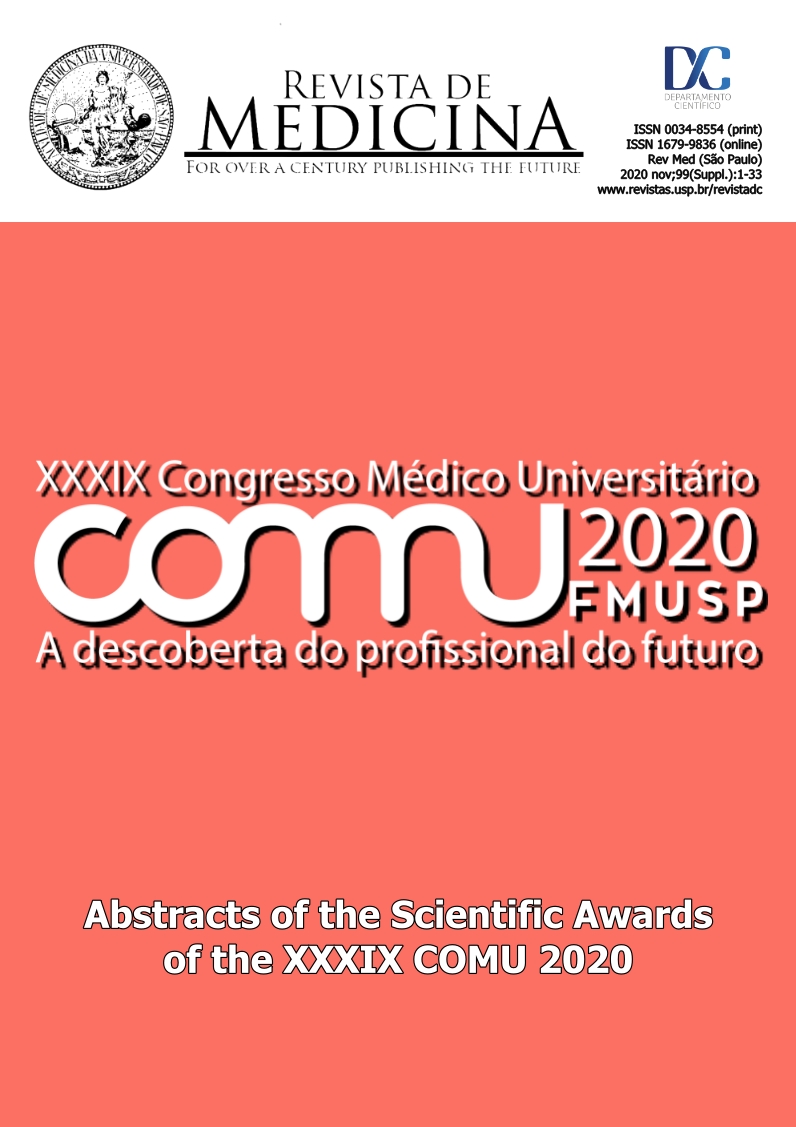Incidence of hemoglobinopathies and diagnostic algorithm in newborns in the state of Mato Grosso do Sul
DOI:
https://doi.org/10.11606/issn.1679-9836.v99iSupplp13-13Palavras-chave:
Hemoglobinopathies, Sickle cell, Hemoglobin SC diseaseResumo
Introduction: Hemoglobinopathies are inherited disorders that affect the normal aspect of human hemoglobin (Hb). The disorders can be structural defect in one of globin subunits (variant hemoglobin) or reduction in the rate of globin chain synthesis (thalassemia). In this scenario, Hb S stands out as the most frequent hemoglobinopathy in the world and it’s responsible for sickle cell disease (SCD). HbS can be found in different combinations, resulting in extreme clinical conditions; it can range since a severe presentation - sickle cell anemia (HbSS) to asymptomatic - sickle cell trait (HbAS). Since 2013, screening for hemoglobinopathies has been covered by the National Neonatal Screening Program (NNSP) and aims to diagnose and intervene in cases of hemoglobinopathies in all Brazilian newborns. In view of the large amount of abnormal Hb described and the different combinations of hemoglobinopathy, the diagnosis is complex and involves a trained professional team.
Objective: To evaluate the incidence of abnormal Hb in newborns (NBs) in the state of Mato Grosso do Sul (MS) and propose a hemoglobinopathies diagnostic algorithm for health services in order to outline the appropriate conduct, such as treatment or genetic orientation.
Methodology. Cross-sectional, observational, descriptive and quantitative study, carried out between January 2019 and February 2020, involving 42,032 RNs from MS through the PNTN. Abnormal Hb samples were analyzed using electrophoretic, chromatographic techniques (HPLC-Ultra2 and Genesys, Trinity Biotech) and molecular techniques (PCE-RE and GAP- PCR) by Neonatal Screening Laboratory of MS and university laboratory.
Results: It was found that 1070 newborns (mean age: 12.4 days) had abnormal Hb, with hemoglobin profiles: 792 (74%) HbFAS, 238 (22.2%) HbFAC, 12 (1.1%) HbFSA, 10 (0.9%) HbFCA, 7 (0.7%) HbFAD, 4 (0.4%) HbFS, 4 (0.4%) HbFSC, 1 (0.1%) FC and 2 (0.2%) other Hb profiles not detected.
Discussion and Conclusion: The creation of a hemoglobinopathies diagnostic algorithm becomes a great ally of health services for early interventions, when it’s necessary. The initial evaluation by HPLC quick scan is important to differentiate, according to the profile presented at birth, normal phenotypes (HbFA) from abnormal ones. The distinct phenotypes of HbFA must be analyzed by HPLC high definition. In case of doubts regarding about the type of hemoglobinopathy, confirmatory tests should be performed using molecular biology, such as RFLP-PCR, PCR-AE, GAP-PCR and DNA sequencing. The data collected show us that the Hb S trait is the most incident, followed by the HbC trait; none of both have significant clinical repercussions. On the other hand, for symptomatologic cases, there is SCD patients of different genotypes (Hb SS, Hb SC and Hb S/Beta + thalassemia). Thus, the importance of a diagnostic algorithm capable of optimizing the diagnosis and reducing errors in the identification of hemoglobinopathies is endorsed, as well as serving as support for the implementation of prophylactic practices, referral to specialized treatment and genetic orientation to the family in these cases.
Downloads
Referências
não consta
Arquivos adicionais
Publicado
Edição
Seção
Licença
Copyright (c) 2020 Giovanna da Silva Parente, Thaís Cavichio David, Michelly Zanchin, Josiane de Sousa Palmier, Edis Belini Júnior

Este trabalho está licenciado sob uma licença Creative Commons Attribution-ShareAlike 4.0 International License.




